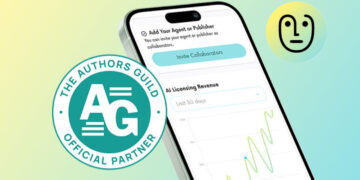Where people once craved “the human touch” (or at least the human voice) they seem pretty happy to converse with chatbots! By 2027, chatbots will be the number one source of customer support and, according to research by CCW, around 84% of companies believe that AI chatbots will gain importance in the realm of customer communication. While it is true that some questions simply cannot be answered by a bot, chatbots are a vital aid for customers who ask questions outside normal business hours and need help with tasks like setting up a meeting. Many would say that chatbots are the 24/7 assistant that every business wishes they had.
Chatbots and Customer Service: A Match Made in Heaven
Research compiled by Tidio shows that a strong majority (69%) of customers are satisfied with the responses they receive from chatbots. Around 10% of those surveyed are neutral, while only 10% are dissatisfied with chatbot conversations. Let’s take the case study of the recreational vehicle (RV) company, Camping World. This business struggled during the COVID era, when customer surges led to delays in response times. By relying on a chatbot (in this case watsonx Assistant), the company increased customer engagement by 40% and decreased waiting times significantly. Today, chatbots are employed in a wide array of industries, including insurance, retail, banking healthcare, and government.
A Handy Marketing Tool
Many companies specializing in marketing and PR are prioritizing the use of chatbots from the get-go, with some seeing artificial intelligence as a key element in getting a PR business set up. Before this type of company is launched, founders usually work on conducting market research and finding ways to build a strong online presence. It makes sense to invest in optimal chatbot software from the very start. Doing so can ensure that even if a startup is small and limited in its staff to its founders, it can present a professional image to customers. Top-quality chatbot software can conduct a keen analysis of what customers want and feel, assist with product inquiries, and deliver faster resolutions through intelligent automation and LLM (large language model) solutions. The latter uses natural language processing to understand and generate humanlike responses. They are specifically designed to handle language-related tasks.
It’s Getting Personal
Far from being cold or robotic solutions, chatbots can help ensure customers feel seen and heard, by personalizing customer interactions. This goal is achieved through integration with CRM databases and tailoring responses based on past client behaviors. When a client clicks on your site, for instance, a chatbot can appear asking them if they wish to check on the status of a recent order or make suggestions of products similar to those they have purchased in the past. A website, then, would not look the same to all users, since a completely new user may receive a message such as “Is this your first time here? Need suggestions on which of our products are best suited to your needs?” Of course, sometimes, despite initial contact with a chatbot, a customer may require human assistance. In this case, the bot can speed things up by letting the customer service specialist know the main issues/queries/complaints relating to the customer.
On the Go
At least 79% of all smartphone users make purchases online using their mobile devices and 50% of all website traffic comes from mobile devices. This means one thing for businesses wishing to deliver optimal service: it must be mobile-friendly! Chatbots have the unique ability to work across various channels, including websites, emails, and messaging apps. They are compatible with popular messaging apps like WhatsApp and Facebook Messenger, so regardless of where your customers’ inquiries hail from, you can ensure they will be answered speedily, accurately, and efficiently.
AI and chatbots are already making impressive strides across an array of industries. Their benefits include 24/ access, personalization capabilities, and omnichannel efficiency. They also simplify customer service staff’s tasks by giving them a rundown on the issue a customer wishes to speak about. What’s more, the only way is up with this handy business tool, since AI is progressing in leaps and bounds and will undoubtedly be a key ally for any business wishing to reach and communicate with customers.
Author:Nina Sumner
































